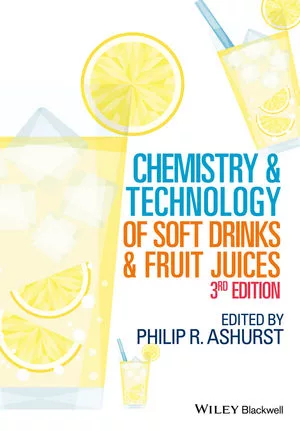Investing in People and Technology
Investing in People and Technology
New renovation expands capabilities at PepsiAmericas’
Austin, Ind., plant
The three most important
things in real estate are often touted as “location, location,
location”, but as far as PepsiAmericas’ Austin, Ind.,
production facility is concerned, it’s location, location and people.
The company recently completed a $10-million renovation on its plant in
southern Indiana that gave it more square footage, expanded its
capabilities and incorporated a number of systems developed internally by
its employees.
Located just a half mile from a major expressway,
PepsiAmericas’ Austin facility is centrally located within the
company’s territory and easily serves several of the bottler’s
most important metropolitan areas, including Louisville, Cincinnati and
Indianapolis. The plant sits on 33 acres of land, which gave it ample space
for the recent expansion that added Aquafina bottled water to the
production line-up as well as new carbonated soft drink capacity and more
warehouse space.
The creation of the Aquafina system allowed the
company to update its entire water treatment operation. The company
implemented a “smart R-O”, or reverse-osmosis, system capable
of handling 32,000 gallons of water per hour. The “smart”
system is computer monitored, constantly keeping track of which valves are
open and closed and how much water is in each tank.
In addition to purifying water for Aquafina, the
plant’s water treatment system pretreats all of the water used for
carbonated soft drinks and its other products.
All water used in the plant is carbon-filtered in one of two carbon tanks,
and then Aquafina goes through the extra step of ozonation.
Doing Double Duty
Flexibility has been built into the operations in Austin. The
plant produces 26 million cases of product each year on only two can lines and
one bottle line. The lines are changed over to accommodate numerous products,
both carbonated and non-carbonated, and plant operators are often able to control
several processes from a single location.
“We had one can line, now we have two,” explains Plant Manager
Scott DeVries. “We had six people who ran one line, and now we have six people
who run two lines. We’ve positioned everything so an operator can run two at
the same time.”
Bottles and cans enter the plant through a fully
automated receiving area. Twenty-two pallets per load are pulled off the
trucks and onto depalletizers that feed the filling lines. Cans are air
conveyed to the fill room where they are “warm filled” and the
lids are sealed on. DeVries explains that the warm fill, which is done at a
temperature slightly higher than traditional cold-fill, reduces the energy
needed to cool the product. Along with the addition of tipless valves, the
process has allowed the fillers to speed up to 1,250 per minute.
After filling, the cans are packaged on one of three
multipackers into a number of configurations, including six-, 12-, 15-, 18-
and 24-packs. Although it’s just on the heels of the last major
renovation, the plant is preparing for its next addition, which will be the
FridgeMate multipack.
Bottle Line Innovations
Because they are taller, lighter and often carry static electricity,
bottles are more difficult than cans to depalletize and get in a single file
line for filling. The plant implemented a pressureless combiner that consists
of several conveyor belts that each move at a different speed to slide the bottles
into a neat line. The seemingly simple solution solved a number of headaches,
according to DeVries who says, “This is the best thing they’ve ever come up
with on a bottling line.”
The bottles are conveyed by
the neck and rinsed before they are filled. The plant’s one bottle
line is capable of filling eight PET package sizes of both carbonated and non-carbonated product as well
as Aquafina bottled water. A “parts cart” stands nearby,
holding all of the changeover parts needed to adapt the filler from one
product to another. The close proximity of those maintenance parts is
another example of the plant’s built-in flexibility. Maintenance pods
are located in several parts of the plant, allowing operators to keep materials close at hand rather than run to another part of the
plant to find the necessary tools.
In the filling room, non-carbonated products receive a
dash of liquid nitrogen to keep the bottles rigid, an extra step that is
not required by the carbonated products because of their CO2.
Once filled, some of the bottles are shrinkwrapped
into multipacks of six, 12 or 24 and are cased for shipping. “Cans
were always the [package] people took home from the grocery store,”
says DeVries, explaining the gradual movement to PET multipacks in the
bottler’s territory. Depending on the retail destination, the plant
might use special overwrap for spec-ific stores such as Wal-Mart or Kroger.
The packages are then date-coded with the specific time of the
production run, the location and other information.
In addition to bottles and cans, the plant produces 6.5 million gallons of product for foodservice in 3- and 5-gallon bag-in-box, 5-gallon premix and 1-gallon jugs.
In addition to bottles and cans, the plant produces 6.5 million gallons of product for foodservice in 3- and 5-gallon bag-in-box, 5-gallon premix and 1-gallon jugs.
Use and Reuse
From the strapping used to hold together pallets of
empty bottles to stretch-film, plastic and corrugated boxes, just about
everything in the Austin plant is recycled. “You name it, we recycle
it,” says DeVries.
The Austin team carried that philosophy over to the construction
of its new quality control lab where it made use of existing cabinetry that
was refurbished and given new life.
The lab, which is staffed by a team of 12, runs 24
hours a day, seven days a week, even when the lines are not running. In
addition to monitoring quality of finished product and product on the line,
QA/QC personnel are responsible for receiving concentrate and other raw materials, overseeing sanitation and preparing for start
up after sanitation.
For quality monitoring purposes, samples of both raw
materials and finished product from every production run are held in a
walk-in cooler and in dry storage for at least the shelf life of the
product.
Customized Shipping
The Austin plant’s new warehouse ships between 45 and 100 truckloads per day, and in keeping with
the demands of its customers, more and more of the shipments are
custom-picked.
“We’ve got large facilities that get 20 loads a day and others
that get one load a week,” says DeVries. “With the new warehouse addition, we’ve
got a ‘pick, stage and load’ [area].”
As opposed to simply shipping entire pallets,
operators pick loads of mixed product based on customer orders. The
warehouse holds soft drinks and water produced in Austin as well as new age
products such as Starbucks Frappuccino and DoubleShot, Lipton teas and SoBe
that are produced elsewhere and distributed from the Indiana plant.
“In the past, the customer had to take a
pallet,” says DeVries. “But we’ve become more
customer-focused and if they want a case, we’ll give them a case,
even if it’s going to a warehouse.
“People might say ‘you’re double handling’, but our experience
has been there’s no more time added to this,” he says. “We have very few errors
with stage and load.”
PepsiAmericas’ Austin plant handles further
production and shipping complexity that is
inherent in the geographic differences of its territory. Because it covers
a diverse geography with a number of universities and metropolitan areas,
it often has several packages and promotions running at the same time.
“We service three sales divisions,” explains DeVries. “We could
have three promos going on at once. For example, we’ll have a Kentucky Derby
can, a Vincennes University can and a Cincinnati Reds can all at the same time.
So we’ve got three Pepsis because we have such a large area.”
All product areas in the warehouse are labeled and numbered,
and eventually the product will be barcoded for placement within the warehouse.
Product ships from the plant from seven loading docks, and the facility features new high-speed doors to save on heating costs and repairs. The tear-away doors open automatically for trucks and “repair themselves” if they are knocked out of their runners by snapping back into place.
Product ships from the plant from seven loading docks, and the facility features new high-speed doors to save on heating costs and repairs. The tear-away doors open automatically for trucks and “repair themselves” if they are knocked out of their runners by snapping back into place.
A Sense of Ownership
PepsiAmericas has made employee participation and
ownership one of its missions, and the Austin plant is full of examples of
employee input. From management of the maintenance areas to the
plant’s safety committee, an effort is made to turn responsibility
over to employees on the plant floor.
Through the use of local educational opportunities such
as the Scott County Lifelong Learning Center, many of the plant’s
employees also have been encouraged to further their knowledge outside the
plant through accelerated logistics courses or electrical and mechanical
courses.
“It’s part of our succession planning,” says Bruce Honniball,
warehouse transportation manager. “Now when we give them a concept, they understand
why we’re doing it that way. We can’t all be here for the rest of our lives,
so we’re going to train them to be our backup.”
“I’ve got 13 people in the Lifelong Learning Center in Scott
County,” says Engineering Manager Brad Chastain of his team’s participation
in the courses. “[The opportunity] was presented to us, and we jumped on it.
I have 100 percent enrollment… and some of them are going beyond this to get
their Associates degrees.”
In addition to outside educational courses, the plant
uses cross-functional teams to allow employees to learn more aspects of the
operation and take advantage of opportunities for advancement.
“Everyone has a rotation,” says Honniball. “Every three months,
each individual in the warehouse takes a role being a bottle-line driver, a
loader, a can-line driver… They’re cross-trained in every aspect of warehouse
material handling.”
DeVries says the participation not only contributes to employee
satisfaction, but as plant personnel are encouraged to develop innovative solutions
to problems, many of their ideas are turned into reality and it benefits the
company’s bottom line.
Looking for a reprint of this article?
From high-res PDFs to custom plaques, order your copy today!





